
Security thru obscurity.
More on this topic to come.
Ham radio, computers and data from a wirenut

Security thru obscurity.
More on this topic to come.
I decided to build a new HF Dipole and choke for a friend of mine, and for myself. I ended up using 20 feet of coax for a choke wrapped tightly around a section of 2″ PVC pipe with binding post connectors for terminating the end of the coax and connection points.
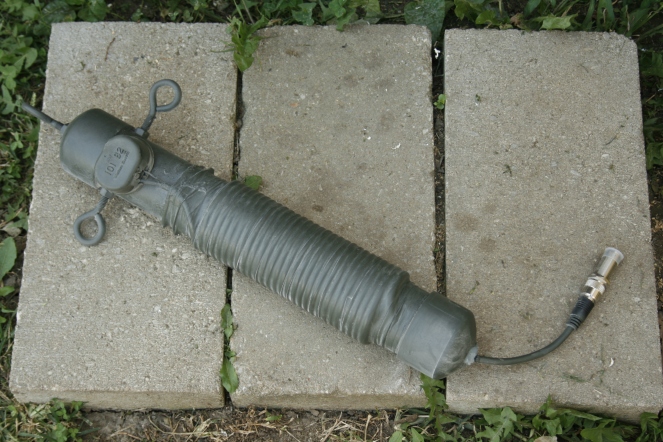
The top eye bolt is for hanging from a support strand and the eye bolts on the side are for tension relief for the actual dipole wire. Here is a close up picture of the binding posts under the rubber cap:
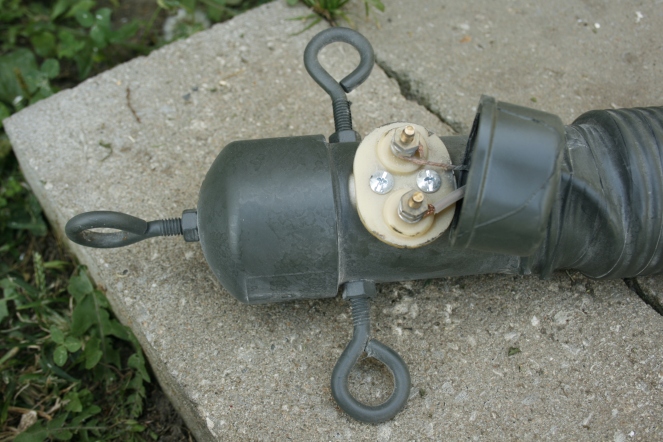
The coax was terminated on the binding posts, zip tied to the PVC pipe, wrapped tightly around the pipe and the end was stuffed through a hole in the pipe to feed it out the bottom. The coax was then tightly wrapped with multiple layers of electrical tape, the end of the exposed coax was slathered in scotchkote (liquid electrical tape) and the entire thing given a couple coats of OD green rustoleum.
I then improvised a simple, yet effective, wire un-roller (this saved tons of time!)
(By the way, LOWES has or had 500′, 14ga single conductor stranded in brown for about $16):
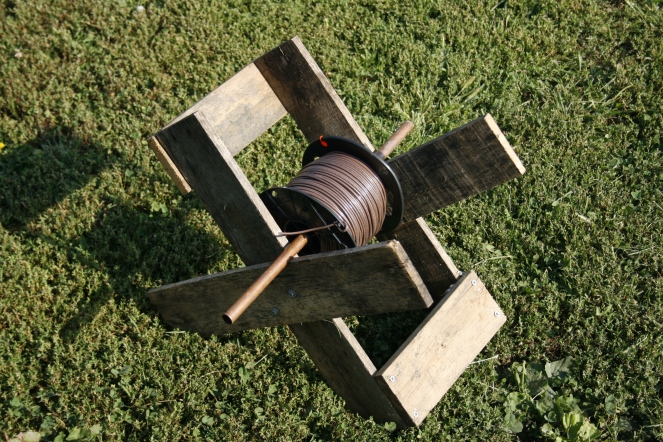
We ended up deciding to try to go ahead and build a multi-band dipole, because, why not?! We certainly had enough wire. So we sat and made calculation for about 10 minutes until we came up with our figures on how to cut it for each band. We wanted to be able to use this dipole, short of a tuner, on at least 20, 40, 75 and 160 meters.
To do this, we placed insulators (1/4″ PVC) at the end of each band length and used Anderson Power Poles to quickly jumper the next section together. By doing so, we could extend our 20 meter dipole (which was the shortest length) to 40 meters by clipping the extensions together, and likewise, all the way down to 160 meters. The entire length of the dipole is a 1/4 wave length on 160 meters, and that ends up being REALLY LONG!

Here’s a picture of the finished antenna, using those plastic extension cord wrappers from walmart (hey! only 97¢ a piece! Those things are a lifesaver with that much wire!!) Throw a bungie cord around it all and we have a well contained portable antenna system capable of most of the HF spectrum. OH, and did I mention, it resonated on each band perfectly??
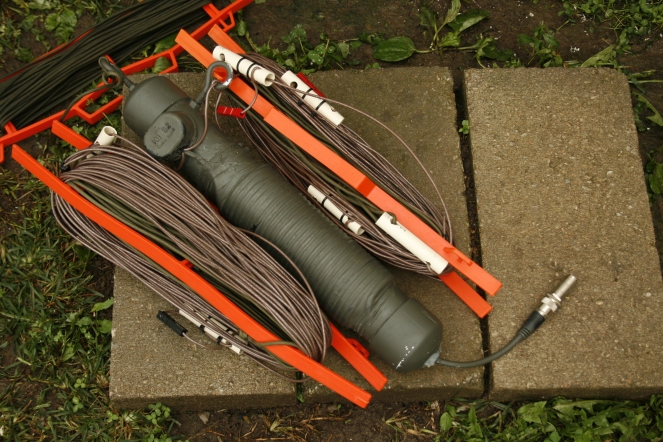
And last but not least, here’s a picture of my setup (the first one I built) that I made for 40 meters (not quite as nice as the second one which I built for my friend):

Thanks for reading!
I needed to have portable power to power my test sets at work, recharge equipment and run radios while out in the field. So I took one of these old 12v battery backup units apart that AT&T used to provide to their customers (to keep the modems online during power outages) and took the circuit board out.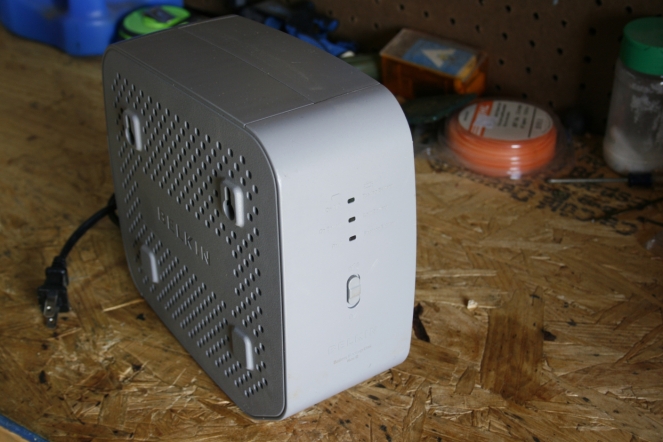
These handy little things each carry a 12v / 7aH SLAB (Sealed lead-acid battery).
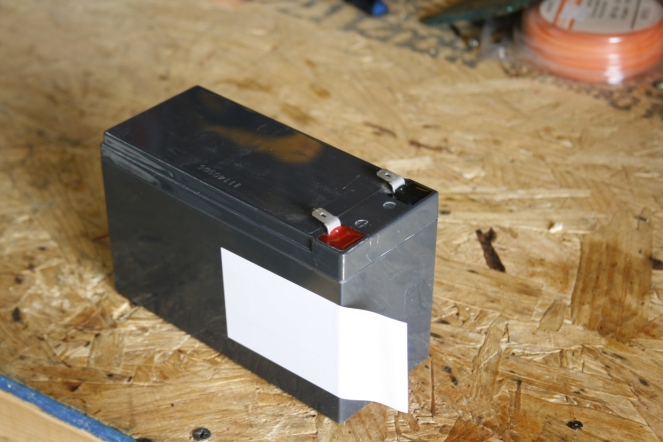
Four of these SLABs will fit nicely in a 50cal ammo can. Wire them parallel and we now have 28aH @ 12v. Place the charging circuit board down in the middle and add an IEC to the front and we can now recharge the reserve with AC power.
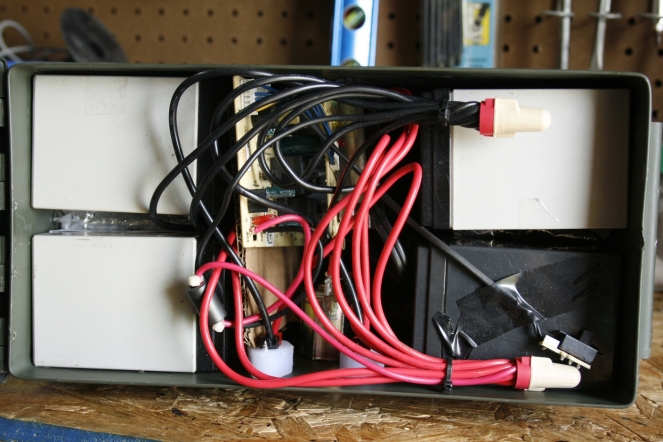
Wire it all together with a 12v cigarette lighter socket and a couple anderson power poles and we have a REALLY usable system for backup power, field ready. (Anderson Power pole mounts, curtsey of Hardened Power Systems)

With this setup, you can run typical items that have the cigarette lighter plug connection, such as a inverter, light, iPad/phone charger, GPS, you name it. And with the Anderson’s you can make many different cords to power things like radios or any custom cable you come up with. To me, this box is very versatile because I can have multiple andersons plugged in or run things on the cigarette plug. Remember, only 28 amp Hours, but that should be plenty if you are frugal with it.
Here is a picture of the box running a 12v / 36w LED flood light for work. Great for crawl spaces, basements or working out after dark. Definitely lights the work area up and you can see what you need.

Thanks for stopping by and visiting. This site will be a culmination of my projects and adventures into wiring, radio, go-kits and computers. I probably won’t update the site that often, but I’ll try to keep others posted on my new ideas and projects when they come.